Thorben Kröger
Automated Multiscale 3D Feature Learning for Vessels Segmentation in Thorax CT Images
Jan 06, 2019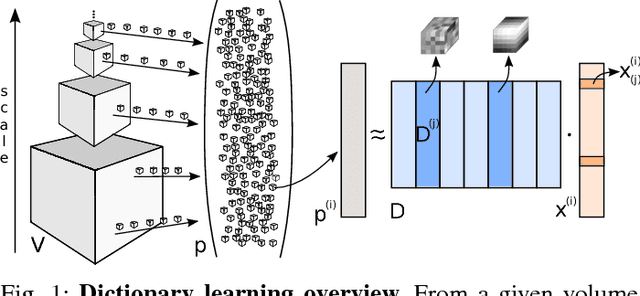
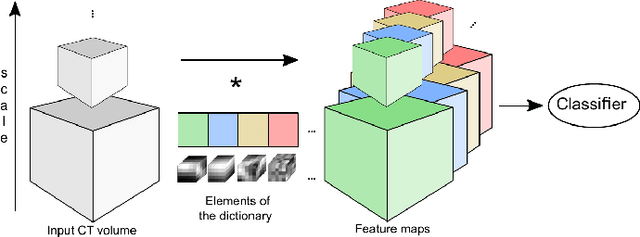
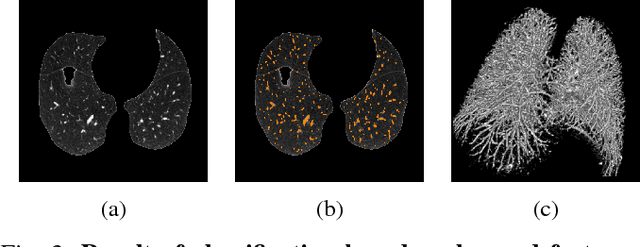

Abstract:We address the vessel segmentation problem by building upon the multiscale feature learning method of Kiros et al., which achieves the current top score in the VESSEL12 MICCAI challenge. Following their idea of feature learning instead of hand-crafted filters, we have extended the method to learn 3D features. The features are learned in an unsupervised manner in a multi-scale scheme using dictionary learning via least angle regression. The 3D feature kernels are further convolved with the input volumes in order to create feature maps. Those maps are used to train a supervised classifier with the annotated voxels. In order to process the 3D data with a large number of filters a parallel implementation has been developed. The algorithm has been applied on the example scans and annotations provided by the VESSEL12 challenge. We have compared our setup with Kiros et al. by running their implementation. Our current results show an improvement in accuracy over the slice wise method from 96.66$\pm$1.10% to 97.24$\pm$0.90%.
Fully Convolutional Deep Network Architectures for Automatic Short Glass Fiber Semantic Segmentation from CT scans
Jan 04, 2019



Abstract:We present the first attempt to perform short glass fiber semantic segmentation from X-ray computed tomography volumetric datasets at medium (3.9 {\mu}m isotropic) and low (8.3 {\mu}m isotropic) resolution using deep learning architectures. We performed experiments on both synthetic and real CT scans and evaluated deep fully convolutional architectures with both 2D and 3D kernels. Our artificial neural networks outperform existing methods at both medium and low resolution scans.
Reference Setup for Quantitative Comparison of Segmentation Techniques for Short Glass Fiber CT Data
Jan 04, 2019
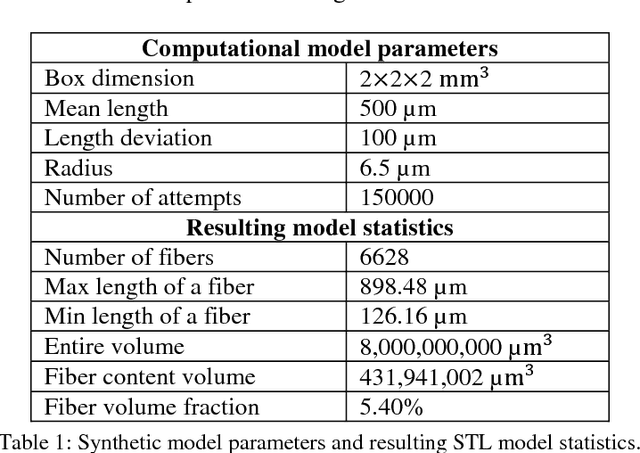

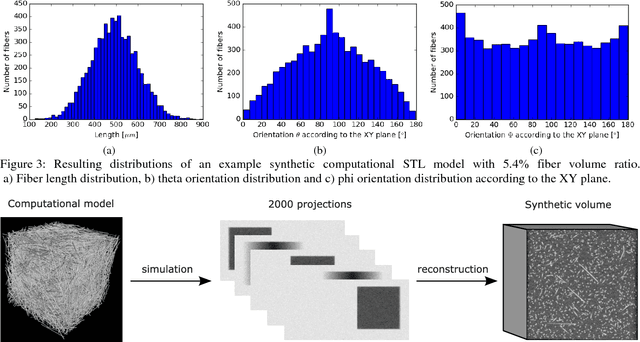
Abstract:Comparing different algorithms for segmenting glass fibers in industrial computed tomography (CT) scans is difficult due to the absence of a standard reference dataset. In this work, we introduce a set of annotated scans of short-fiber reinforced polymers (SFRP) as well as synthetically created CT volume data together with the evaluation metrics. We suggest both the metrics and this data set as a reference for studying the performance of different algorithms. The real scans were acquired by a Nikon MCT225 X-ray CT system. The simulated scans were created by the use of an in-house computational model and third-party commercial software. For both types of data, corresponding ground truth annotations have been prepared, including hand annotations for the real scans and STL models for the synthetic scans. Additionally, a Hessian-based Frangi vesselness filter for fiber segmentation has been implemented and open-sourced to serve as a reference for comparisons.
Instance Segmentation of Fibers from Low Resolution CT Scans via 3D Deep Embedding Learning
Jan 04, 2019



Abstract:We propose a novel approach for automatic extraction (instance segmentation) of fibers from low resolution 3D X-ray computed tomography scans of short glass fiber reinforced polymers. We have designed a 3D instance segmentation architecture built upon a deep fully convolutional network for semantic segmentation with an extra output for embedding learning. We show that the embedding learning is capable of learning a mapping of voxels to an embedded space in which a standard clustering algorithm can be used to distinguish between different instances of an object in a volume. In addition, we discuss a merging post-processing method which makes it possible to process volumes of any size. The proposed 3D instance segmentation network together with our merging algorithm is the first known to authors knowledge procedure that produces results good enough, that they can be used for further analysis of low resolution fiber composites CT scans.
A Comparative Study of Modern Inference Techniques for Structured Discrete Energy Minimization Problems
Apr 02, 2014



Abstract:Szeliski et al. published an influential study in 2006 on energy minimization methods for Markov Random Fields (MRF). This study provided valuable insights in choosing the best optimization technique for certain classes of problems. While these insights remain generally useful today, the phenomenal success of random field models means that the kinds of inference problems that have to be solved changed significantly. Specifically, the models today often include higher order interactions, flexible connectivity structures, large la\-bel-spaces of different cardinalities, or learned energy tables. To reflect these changes, we provide a modernized and enlarged study. We present an empirical comparison of 32 state-of-the-art optimization techniques on a corpus of 2,453 energy minimization instances from diverse applications in computer vision. To ensure reproducibility, we evaluate all methods in the OpenGM 2 framework and report extensive results regarding runtime and solution quality. Key insights from our study agree with the results of Szeliski et al. for the types of models they studied. However, on new and challenging types of models our findings disagree and suggest that polyhedral methods and integer programming solvers are competitive in terms of runtime and solution quality over a large range of model types.
 Add to Chrome
Add to Chrome Add to Firefox
Add to Firefox Add to Edge
Add to Edge